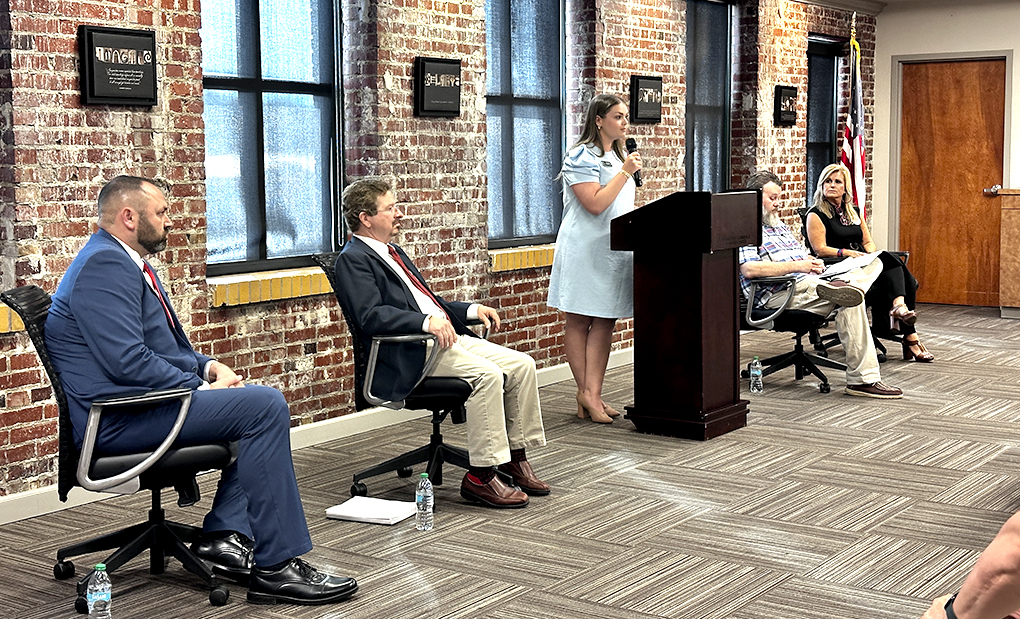New York’s nuclear “bailout” faces court challenges and questions from lawmakers
Published 4:42 pm Thursday, May 18, 2017

- MorgueFile
ALBANY — The Cuomo administration’s effort to drive subsidies to three upstate nuclear-power plants is being challenged in both the courts and the halls of the statehouse.
Trending
The cost of what critics call a “nuclear bailout” is already being reflected in higher utility bills across the state.
The opponents warn the plan will lead to higher costs for taxpayers and consumers as power bills increase for municipalities, school districts, universities and hospitals.
Under the subsidy program, which has been approved by the Public Service Commission, New York utilities are buying power at inflated rates from Exelon, a Chicago company that owns the reactors at Nine Mile Point on the shores of Lake Ontario, James FitzPatrick Nuclear Power Plant in Oswego County and the R.E. Ginna Nuclear Plant in Wayne County.
OPPOSITION FORCES
Legislation to derail the program is pending in both houses of the State Legislature, though the fate of the measure is unclear.
Meanwhile, lawsuits challenging the subsidy have been filed against the state by a group of owners of gas-fired power plants.
Trending
The group contends the subsidy is illegal because it interferes with the federal government’s ability to regulate energy prices.
On a separate but related front, Hudson River Sloop Clearwater, an environmental group, is challenging the arrangement in state court.
It contends state regulators failed to follow proper procedures in approving the subsidy last year and that ratepayers will be left facing “unreasonable and unjust” costs.
The New York Public Interest Research Group, a consumer watchdog, has joined Clearwater’s court action. Its legislative director, Blair Horner, said court arguments in both lawsuits are expected to be heard within the next several weeks.
Horner noted several lawmakers have concerns that they were left out of the loop when Gov. Andrew Cuomo pushed through a subsidy that is expected to cost billions of dollars.
“It’s sort of astonishing to them that they were cut out of the process,” he said.
ALTERNATIVE-ENERGY GOALS
State regulators approved the subsidy as part of Cuomo’s goal of having New York trim its dependence on energy produced from fossil fuels and get at least 50 percent of its power from renewable sources by 2030.
At a legislative hearing this month, the plan — known as the Clean Energy Standard — was vigorously defended by Greg Sayre, acting chair of the state Public Service Commission, and John Rhodes, president of the New York Energy Research and Development Authority.
Sayre called Cuomo’s plan “the right approach for fighting climate change in a responsible and cost-effective manner.”
‘HUGE IMPOSITION’
Left unconvinced of the need for having utilities pay higher rates for power so the Exelon plants can stay profitable, Assembly Environmental Committee Chairman Steven Englebright, D-Long Island, called the arrangement “a huge imposition on the ratepayers of the state.”
The added impact on monthly electricity bills of residential customers comes to about $2 a month, on average.
The subsidy, by helping the plants stay open, preserves some 2,000 jobs in New York, a point emphasized by leaders of the International Brotherhood of Electrical Workers.
The union has praised Cuomo for going to bat for the nuclear plants.
Ted Skerpon, chairman of IBEW Utility Labor Council, said in an interview that those making the case that the power being produced by the nuclear plants could be quickly replaced by expanding solar and wind energy production are mistaken and exaggerate the costs of the nuclear subsidy.
“The costs would be double, if not more, if these plants go away,” he said of Exelon’s upstate nuclear facilities.
“It would cripple our economy.”
One of the allies of the IBEW workers, State Sen. Betty Little, R-Queensbury, said she sees the state’s effort to keep the upstate nuclear plants running as necessary.
“Wind and solar are great, but they can’t produce anywhere near the power you get from a nuclear plant,” Little said.
Closure of the plants would also have detrimental impacts on the tax base of local school districts and municipalities, she said, and put hundreds of people on the unemployment line.
DEMONSTRATION
Those fighting the nuclear subsidy have stepped up their campaign to convince Cuomo to pull the plug on it.
Representatives of NYPIRG and other groups opposed to it, calling themselves Stop the Cuomo Tax, staged a demonstration this week outside the governor’s Manhattan office.
“Too many of us have trouble paying our utility bills already, and now Governor Cuomo is raising our rates by almost $8 billion to fund a giant giveaway to Exelon,” one of the protestors, Renata Pumarol, deputy director of New York Communities for Change, said in a statement.
Joe Mahoney covers the New York Statehouse for CNHI’s newspapers and websites. Reach him at jmahoney@cnhi.com




